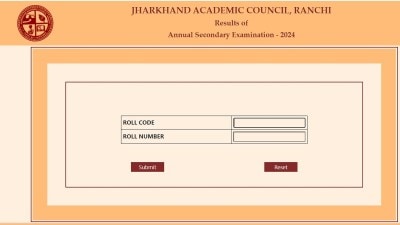- India
- International
Exhibits at a new gallery in Delhi’s Purana Qila tell stories of their solitary journeys
The exhibit also sensitises visitors about the illegal trade of precious heritage artefacts and the process of receiving them.
 The Standing Buddha statue (Express Photo by Praveen Khanna)
The Standing Buddha statue (Express Photo by Praveen Khanna)
Last week, Gallery of Confiscated and Retrieved Antiquities at Delhi’s Purana Qila opened its doors to visitors. Curated by the Archaeological Survey of India (ASI), the gallery is located in one of the arched cells at the fort and displays as many as 190 antiques that were stolen from India and have now been recovered. The exhibit also sensitises visitors about the illegal trade of precious heritage artefacts and the process of receiving them. The gallery has two parallel narratives — one, establishing the importance of these artworks, laws governing heritage and the theft and trafficking of these items, and the other is the display, which ranges from 2nd century to 19th century stone and metal sculptures, coins, paintings, terracotta, ivory and copper artefacts, and architectural panels. A look at some of the iconic exhibits, how we lost them, and how we brought them home:
Standing Buddha
6th-7th century — East India
The Buddha is seen holding a garment (snaghati) in his raised left hand while the other hand is probably in varadamudra. Standing Buddha, originally from Bodh Gaya Math Compound in Bihar, was reported missing by former ASI Director-General Debala Mitra. It was later found displayed at the Metropolitan Museum of Art in New York. After an inquiry, the Met Museum returned the work in March 1999.
Sridevi
12th-13th century — Tamil Nadu
 The Chola bronze, Sridevi (Express Photo by Praveen Khanna)
The Chola bronze, Sridevi (Express Photo by Praveen Khanna)
The Chola bronze image of Sridevi is in a tribhanga pose holding probably a lotus stem in her raised left hand. She wears a high crown, bangles, earrings, necklace, anklets and a breast band. The sculpture, smuggled out of India by notorious antiquity dealer Subhash Kapoor, was seized by the US Homeland Securities in New York and returned to India in June 2016.
Brahma-Brahmani
14th-15th century — West India
The marble sculpture was stolen from an open air museum at Rani Ki Vav in Patan, Gujarat, in November 2001. The discovery of the theft came to light in 2012 when a strikingly similar image of the sculpture appeared on an illustrated advertisement by London-based antique dealer Jeremy Knowles. The issue was examined by the ASI, which concluded that the Brahma-Brahmani stolen from Patan and the image on the advertisement was the same. India got back the work after 15 years, when the-then UK High Commissioner Navtej Sarna took its possession from London-based Art Loss Register.
 A retrieved sculpture at the gallery in Purana Qila (Express Photo by Praveen Khanna)
A retrieved sculpture at the gallery in Purana Qila (Express Photo by Praveen Khanna)
Mithunas
1st century — Rajasthan

The two amorous Mithuna sculptures from Atru, near Kota in Rajasthan, were stolen from the ruins of a Vishnu temple built in 965-70 BC. One of these sculptures was found to be illustrated through an advertisement in the Hong Kong-based journal, Arts of Asia (March-April 2010). A French national, Michel Postel, on seeing the advertisement, met Indian Ambassador to France, Rajan Mathai, and requested him to follow up with the officials in the UK. Interpol then issued an alert when the sculpture was supposed to move from London to New York. Homeland Securities seized the work in April 2010, while the second sculpture was seized in July the same year.
Apr 19: Latest News
- 01
- 02
- 03
- 04
- 05



































